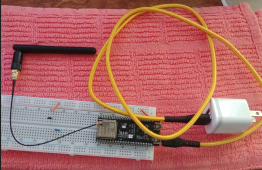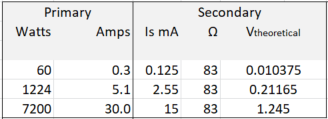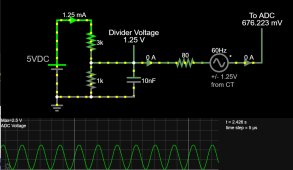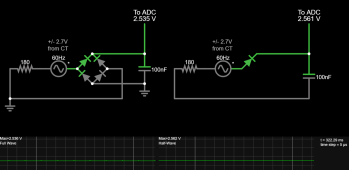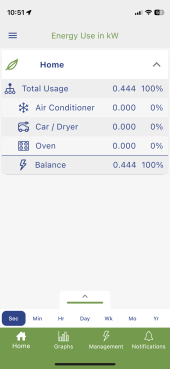svetz
Works in theory! Practice? That's something else
I recently picked up some CTs and they're now collecting dust.
The only thing I can think of to do with them is a DIY energy monitor, similar to the IotaWatt (check out @MurphyGuy 's post for a fabulous installation and information on it). The IotaWatt is typically favored over similar products like the Emporia Vue (data isn't local) or the Sense (which @FilterGuy says is okay). The Energy Detective (TED) seems to be a cross between the Iotawatt and Sense. There are also two other products I've heard about: the GEM monitor and the RIO.
All of those products are somewhat pricey and I don't think I really need one as I can use my 120V watt meter or clamp meter to get very accurate readings. Although, it might be interesting to see how much energy my ancient F22 air conditioner is using to see if it would be better to replace it. It would also take two CTs, one for the air handler and one for the compressor/condenser. Given the lower operating pressures than modern refrigerants, it might be cheaper.
Costs
It's about $200 for the base IotaWatt unit which supports 14 CTs, comes with a power supply, and two 200 amp CTs. Additional CTs are $9.10. I've two load centers with about 20-25 circuits each, so monitoring everything would be very pricey. You probably don't need to monitor everything though. To just get two circuits I could get the base kit and two 50 amp CTs for $180.
Assuming I actually do anything with this, I'll initially try to use junk laying around the house, so essentially free. But, the component prices look cheap:
ESP32: $5-8 (these have WiFi built in and the ESP32-S2-DevKitC-1 has 20 ADC pins)
CT: I picked up some 120A CTs for $4 from Amazon, but you can find them elsewhere. They're overkill for the circuits I'll measure.
So, monitoring 50 channels would be < $100.
But there are other parts that would be needed, e.g., twisted pair wire to carry the CT output back to the chip, some resistors, diodes, and capacitors. Fancy connectors like the IotaWatt would be nice too.
It would probably be cheaper to use a multiplexer than to buy caps, diodes, and resisters for each of the channels, but you also couldn't tune per circuit, although if numerous circuits all have the same characteristics, you wouldn't need to tune.
As I only have two CTs I'll probably skip the multiplexer. Unless it works really well and I find the information valuable enough to part with more $$$ I doubt I buy more CTs or do anything else with it.
Accuracy
Starting here, I've got a few test runs on the CTs. With tuning, it seems it can be revenue grade. As I'm only planning on monitoring the old AC, I don't have to worry about fancy tuning for low-wattage devices.
Next Steps
The next step is to see if the ESP can reliably transmit wirelessly from the load centers. I've two load centers, one is in a living area so would need to be inside the load center to hide it from sight. As the load center is metal it might be shielded enough to kill the idea. The downstairs one is in a closet so can be outside the load center, but the router is upstairs and some distance away, the signal will have to penetrate inches of concrete with rebar. So I'll have to dig into the treasure horde and find an MCU collecting dust, then code it up to transmit test data and hopefully signal strength.
Any thoughts?
The only thing I can think of to do with them is a DIY energy monitor, similar to the IotaWatt (check out @MurphyGuy 's post for a fabulous installation and information on it). The IotaWatt is typically favored over similar products like the Emporia Vue (data isn't local) or the Sense (which @FilterGuy says is okay). The Energy Detective (TED) seems to be a cross between the Iotawatt and Sense. There are also two other products I've heard about: the GEM monitor and the RIO.
All of those products are somewhat pricey and I don't think I really need one as I can use my 120V watt meter or clamp meter to get very accurate readings. Although, it might be interesting to see how much energy my ancient F22 air conditioner is using to see if it would be better to replace it. It would also take two CTs, one for the air handler and one for the compressor/condenser. Given the lower operating pressures than modern refrigerants, it might be cheaper.
Costs
It's about $200 for the base IotaWatt unit which supports 14 CTs, comes with a power supply, and two 200 amp CTs. Additional CTs are $9.10. I've two load centers with about 20-25 circuits each, so monitoring everything would be very pricey. You probably don't need to monitor everything though. To just get two circuits I could get the base kit and two 50 amp CTs for $180.
Assuming I actually do anything with this, I'll initially try to use junk laying around the house, so essentially free. But, the component prices look cheap:
ESP32: $5-8 (these have WiFi built in and the ESP32-S2-DevKitC-1 has 20 ADC pins)
CT: I picked up some 120A CTs for $4 from Amazon, but you can find them elsewhere. They're overkill for the circuits I'll measure.
So, monitoring 50 channels would be < $100.
But there are other parts that would be needed, e.g., twisted pair wire to carry the CT output back to the chip, some resistors, diodes, and capacitors. Fancy connectors like the IotaWatt would be nice too.
It would probably be cheaper to use a multiplexer than to buy caps, diodes, and resisters for each of the channels, but you also couldn't tune per circuit, although if numerous circuits all have the same characteristics, you wouldn't need to tune.
As I only have two CTs I'll probably skip the multiplexer. Unless it works really well and I find the information valuable enough to part with more $$$ I doubt I buy more CTs or do anything else with it.
Accuracy
Starting here, I've got a few test runs on the CTs. With tuning, it seems it can be revenue grade. As I'm only planning on monitoring the old AC, I don't have to worry about fancy tuning for low-wattage devices.
Next Steps
The next step is to see if the ESP can reliably transmit wirelessly from the load centers. I've two load centers, one is in a living area so would need to be inside the load center to hide it from sight. As the load center is metal it might be shielded enough to kill the idea. The downstairs one is in a closet so can be outside the load center, but the router is upstairs and some distance away, the signal will have to penetrate inches of concrete with rebar. So I'll have to dig into the treasure horde and find an MCU collecting dust, then code it up to transmit test data and hopefully signal strength.
Any thoughts?
Last edited:




